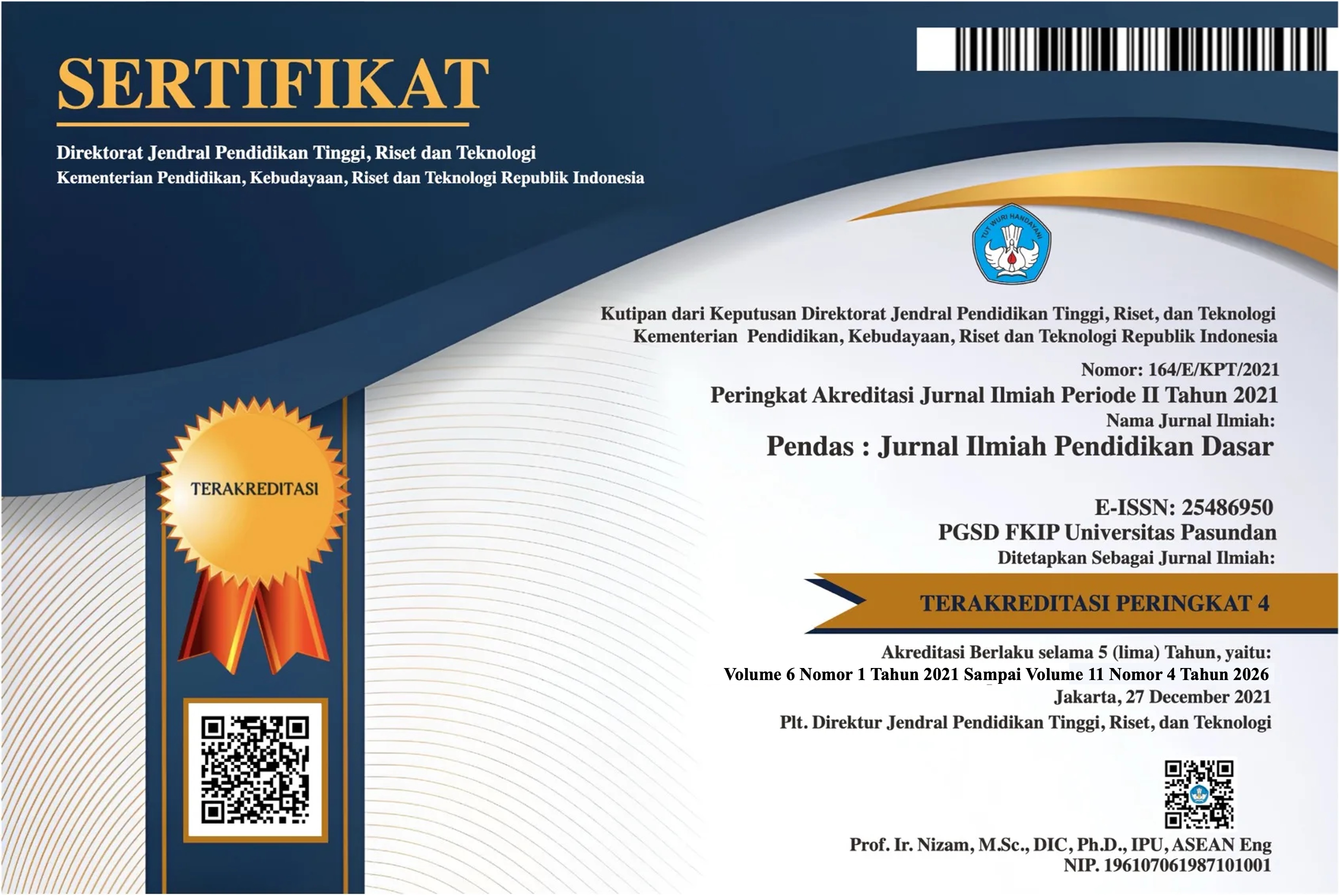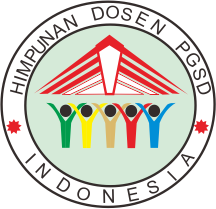ANALISIS PEMBELAJARAN BERDIFERENSIASI BERBANTUAN MEDIA AUGMENTED REALITY TERHADAP HASIL BELAJAR SISWA INKLUSI SPECIFIC LEARNING DISORDER DI SDN KUTOWINANGUN 12 SALATIGA
DOI:
https://doi.org/10.23969/jp.v9i04.19710Keywords:
specific learning disorder students, inclusion, differentiated learning, augmented reality media, senses, learning outcomesAbstract
This research discusses specific learning disorder students who experience obstacles in the implementation of learning in inclusive classes. The purpose of this study is to find out what kind of learning is appropriate in the inclusion class especially for specific learning disorder students and to find out how differentiated learning assisted by augmented reality media can improve the learning outcomes of specific learning disorder inclusion students. This research method is a qualitative case study. The sample of this research is 5th grade students of SDN Kutowinangun 12 Salatiga, which is devoted to specific learning disorder students totalling 3 children. Differentiated learning assisted by augmented reality media is implemented in IPAS subjects with material on the five senses. The data analysis technique uses the Miles and Huberman model. Based on the results of the research that has been conducted by researchers, the results show that differentiated learning can provide good learning services for inclusive classes. So that students who are indicated to experience symptoms of specific learning disorder can receive learning material even with the limitations experienced. In addition, the application of technology-based media such as augmented reality media is able to deepen students' understanding of sensory material through animated images of the sensory organs. Thus, the learning outcomes of students with specific learning disorder in IPAS subjects with sensory material can increase.
Downloads
References
Aditomo, A. (2022). Panduan Pelaksanaan Pendidikan Inklusif.
Badan Perencanaan Penelitian dan Pengembangan daerah kota Salatiga. (n.d.). RPKD.
Barbieri, G., Sanchez-Londoño, D., Cattaneo, L., Fumagalli, L., & Romero, D. (2020). A case study for problem-based learning education in fault diagnosis assessment. IFAC-PapersOnLine, 53(3), 107–112. https://doi.org/10.1016/j.ifacol.2020.11.017
Breaux, E., & Magee, M. B. (2013). How the best teachers differentiate instruction. In How the Best Teachers Differentiate Instruction. Taylor and Francis. https://doi.org/10.4324/9781315855257
Dr. Budiyanto, M. Pd. (2017). Pengantar Pendidikan Inklusif.
Herawati, N. I. (n.d.). PENDIDIKAN INKLUSIF.
Ikramullah, A. S. (2020). Optimalisasi Manajemen Sekolah Dalam Menerapkan Pendidikan Inklusi di Sekolah Dasar.
Lubis, R., Syafitri, N., Maylinda, R. N., Alyani, N. N., Anda, R., Zulfiyanti, N., & Surbakti, O. Z. (2023). Pendekatan Behavioristik untuk Anak Disabilitas Intelektual Sedang. Jurnal Obsesi : Jurnal Pendidikan Anak Usia Dini, 7(2), 1626–1638. https://doi.org/10.31004/obsesi.v7i2.4161
Mayangsari, I., Unik, ;, Salsabila, H., Tari, ;, Irva, ;, Zulaikha, R., Fisca, ;, & Dewi, A. (2020). Pendidikan Teknologi di Sekolah Inklusi. Sosial Dan Kebudayaan, 7. https://doi.org/10.32505/tarbawi.v8i2.2195
Nurfadhillah, S., Alia, F., Setyadi, A. R., Robiah, S., Damiyah, A., Leornadho, R., Berliana, N., Gunawan, A. N., & Safitri, T. (2021). Analisis Faktor Penyebab Anak Lamban Belajar (Slow Leaner) di SD Negeri Jelambar 01 Jakarta Barat. In PENSA : Jurnal Pendidikan dan Ilmu Sosial (Vol. 3, Issue 3). https://ejournal.stitpn.ac.id/index.php/pensa
Nurmalia, L. (n.d.). PENDIDIKAN INKLUSIF. www.penerbituwais.com
Peraturan BPK. (n.d.). UU Nomor 20 Tahun 2003.
Rivaldi, A., Feriawan, U., & Nur, M. (2023). METODE PENGUMPULAN DATA MELALUI WAWANCARA.
Romadhon, M., & Supena, A. (2021). Penanganan Siswa Learning Disabilities di Sekolah Dasar Inklusi. Jurnal Basicedu, 5(3), 1471–1478. https://doi.org/10.31004/basicedu.v5i3.941
Sirojuddin, A. (2020). Optimalisasi Manajemen Sekolah Dalam Menerapkan Pendidikan Inklusi di Sekolah Dasar. In Jurnal Manajemen Pendidikan Islam e-ISSN: On Process (Vol. 1, Issue 2).
Sugiyono. (2022). Metode Penelitian Kualitatif.
Visser, L., Kalmar, J., Linkersdörfer, J., Görgen, R., Rothe, J., Hasselhorn, M., & Schulte-Körne, G. (2020). Comorbidities Between Specific Learning Disorders and Psychopathology in Elementary School Children in Germany. Frontiers in Psychiatry, 11. https://doi.org/10.3389/fpsyt.2020.00292
Wijaya, E. (2020). Identifikasi dan Intervensi Gangguan Belajar Spesifik Pada Anak Identification and Intervention of Specific Learning Disorder in Children. In Damianus Journal of Medicine (Vol. 19, Issue 1).
Wijaya, S., Supena, A., & Yufiarti. (2023). Implementasi Program Pendidikan Inklusi Pada Sekolah Dasar di Kota Serang. Jurnal Educatio FKIP UNMA, 9(1), 347–357. https://doi.org/10.31949/educatio.v9i1.4592
Yulia, Y., Wasito, H., & Fatoni, A. (2020). QUALITATIVE ANALYSIS METHOD OF DETECTION OF WAX CONTENT IN GORENGAN USING SMARTPHONE. Journal of Pharmaceutical Sciences and Community, 15(1), 7–15. https://doi.org/10.24071/jpsc.1511052
Downloads
Published
Issue
Section
License
Copyright (c) 2024 Pendas : Jurnal Ilmiah Pendidikan Dasar

This work is licensed under a Creative Commons Attribution 4.0 International License.



















